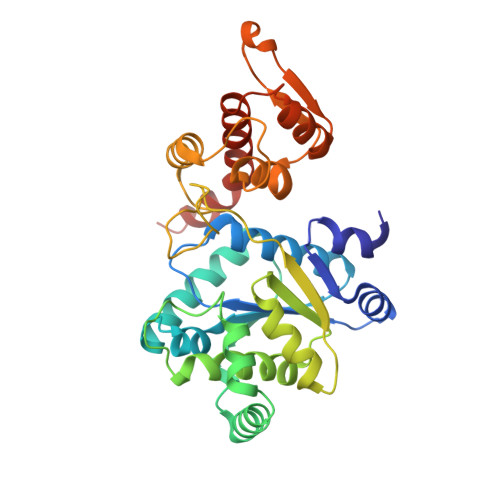Gleaning Unexpected Fruits from Hard-Won Synthetases: Probing Principles of Permissivity in Non-canonical Amino Acid-tRNA Synthetases.
Cooley, R.B., Karplus, P.A., Mehl, R.A.(2014) Chembiochem 15: 1810-1819
- PubMed: 25044993
- DOI: https://doi.org/10.1002/cbic.201402180
- Primary Citation of Related Structures:
4PBR, 4PBS, 4PBT - PubMed Abstract:
The site-specific incorporation of non-canonical amino acids (ncAAs) into proteins is an important tool for understanding biological function. Traditionally, each new ncAA targeted for incorporation requires a resource-consuming process of generating new ncAA aminoacyl tRNA synthetase/tRNACUA pairs. However, the discovery that some tRNA synthetases are "permissive", in that they can incorporate multiple ncAAs, means that it is no longer always necessary to develop a new synthetase for each newly desired ncAA. Developing a better understanding of what factors make ncAA synthetases more permissive would increase the utility of this new approach. Here, we characterized two synthetases selected for the same ncAA that have markedly different "permissivity profiles." Remarkably, the more permissive synthetase incorporated an ncAA for which we had not been able to generate a synthetase through de novo selection methods. Crystal structures revealed that the two synthetases recognize their parent ncAA through a conserved core of interactions, with the more permissive synthetase displaying a greater degree of flexibility in its interaction geometries. We also observed that intraprotein interactions not directly involved in ncAA binding can play a crucial role in synthetase permissivity and suggest that optimization of such interactions might provide an avenue to engineering synthetases with enhanced permissivity.
- Department of Biochemistry and Biophysics, Oregon State University, 2011 Ag and Life Sciences Building, Corvallis, OR 97331 (USA).
Organizational Affiliation:

















